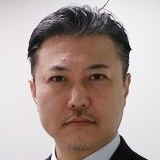Photonic Crystals for Electromagnetic Applications
A special issue of Applied Sciences (ISSN 2076-3417). This special issue belongs to the section "Materials Science and Engineering".
Deadline for manuscript submissions: closed (31 July 2019) | Viewed by 6248
Special Issue Editor
Interests: additive manufacturing; laser lithography; electromagnetic devices, bioceramic implant; energy harvesting
Special Issues, Collections and Topics in MDPI journals
Special Issue Information
Dear Colleagues,
The photonic crystals that are the main theme of the upcoming Special Issue have been designed, fabricated, and evaluated to realize the effective modulation of electromagnetic waves.
Artificial crystals with periodic patterns, fabricated from polymer, glass, ceramic, or metal, can exhibit forbidden bands in their electromagnetic transmission spectra. The frequency ranges of the band gaps are defined by diffraction wavelengths that are comparable with lattice constants. Structural defects with point, line, and plane shapes have been introduced to attain electromagnetic resonance and localization and thus create permission and transmission modes. The peak frequencies can be shifted according to the defect sizes and cavity volumes.
Crystal lattices of nano-, micro-, or millimeter sizes have been fabricated using advanced semiconductor processes or novel additive manufacturing. The electromagnetic properties of visible light or microwaves have been simulated and evaluated for future application to resonators, filters, waveguides, amplifiers, and oscillators.
As a Guest Editor, it gives me immense pleasure to invite you to submit your manuscripts for this Special Issue entitled “Photonic Crystals for Electromagnetic Applications.”
Prof. Soshu Kirihara
Guest Editor
Manuscript Submission Information
Manuscripts should be submitted online at www.mdpi.com by registering and logging in to this website. Once you are registered, click here to go to the submission form. Manuscripts can be submitted until the deadline. All submissions that pass pre-check are peer-reviewed. Accepted papers will be published continuously in the journal (as soon as accepted) and will be listed together on the special issue website. Research articles, review articles as well as short communications are invited. For planned papers, a title and short abstract (about 100 words) can be sent to the Editorial Office for announcement on this website.
Submitted manuscripts should not have been published previously, nor be under consideration for publication elsewhere (except conference proceedings papers). All manuscripts are thoroughly refereed through a single-blind peer-review process. A guide for authors and other relevant information for submission of manuscripts is available on the Instructions for Authors page. Applied Sciences is an international peer-reviewed open access semimonthly journal published by MDPI.
Please visit the Instructions for Authors page before submitting a manuscript. The Article Processing Charge (APC) for publication in this open access journal is 2400 CHF (Swiss Francs). Submitted papers should be well formatted and use good English. Authors may use MDPI's English editing service prior to publication or during author revisions.
Keywords
- photonic crystal
- theoretical simulation
- fabrication process
- electromagnetic wave modulation





